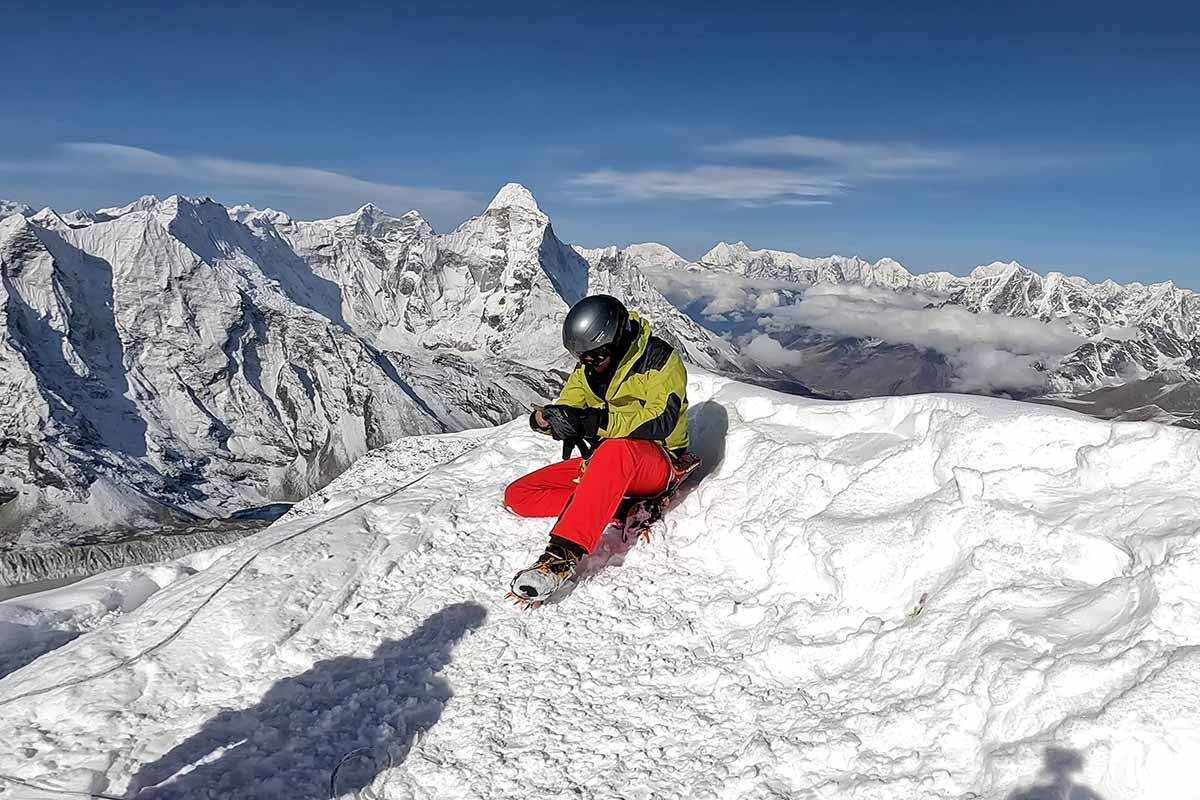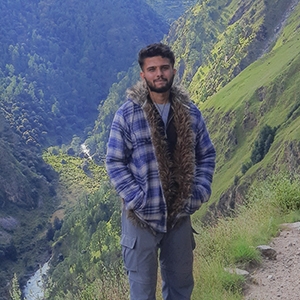Mera Peak Itinerary Highlights
Kathmandu – Lukla – Paiya – Panggom – Khare – Mera High Camp – Summit – Khare – Zatrwa La – Lukla
Requires crossing passes, camping gear, and glacier travel
/article beginning.jpg)
Island Peak Itinerary Highlights
Kathmandu – Lukla – Namche – Tengboche – Dingboche – Chukung – Island Peak Base Camp – Summit – Chukung – Lukla
Can be combined with the Everest Base Camp Trek
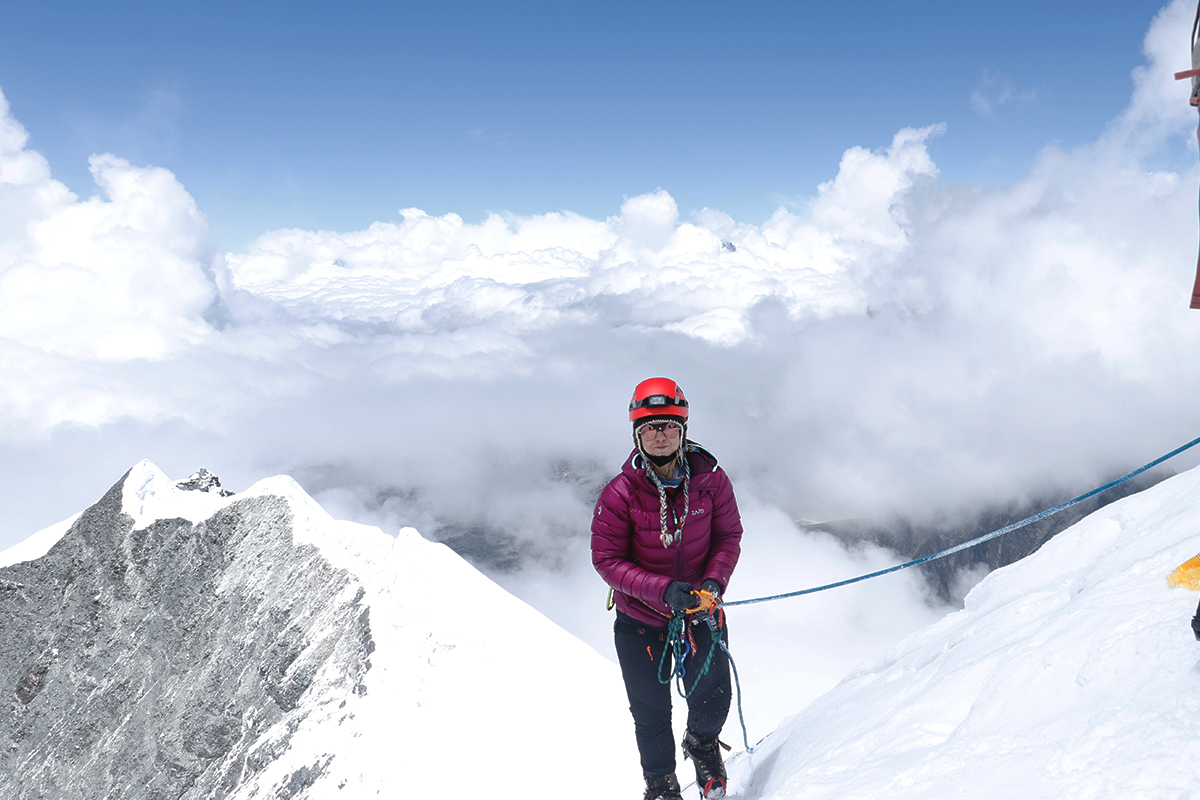
So, let's break it down. As your virtual guide, we'll walk you through the nature, challenges, and rewards of each peak, so you can decide which giant is calling your name. This meticulous comparison of Mera Peak vs Island Peak will help you pick the right peak for your experience.
Climbing Experience
Mera Peak (6,476m/21,247ft): Real test of endurance
Mera Peak is often seen as the gentle peak of the Himalayas. It holds the title of Nepal’s highest trekking peak, but its real charm lies not in technical challenges, but in its immense scale and the breathtaking scenery from the summit. Although the climb isn’t highly technical, the high altitude makes it physically challenging. The expedition takes you through the remote Hinku Valley, a pristine region filled with dense forests, high alpine fields, and far fewer trekkers than the busy Everest routes. Most of the route involves trekking through an isolated landscape, crossing high passes, and sleeping at altitudes above 5,000 meters. The summit push includes a long glacier walk with stable inclines, and depending on the conditions, you might use fixed ropes near the final elevation. Mera is a test of endurance, not technical skill.
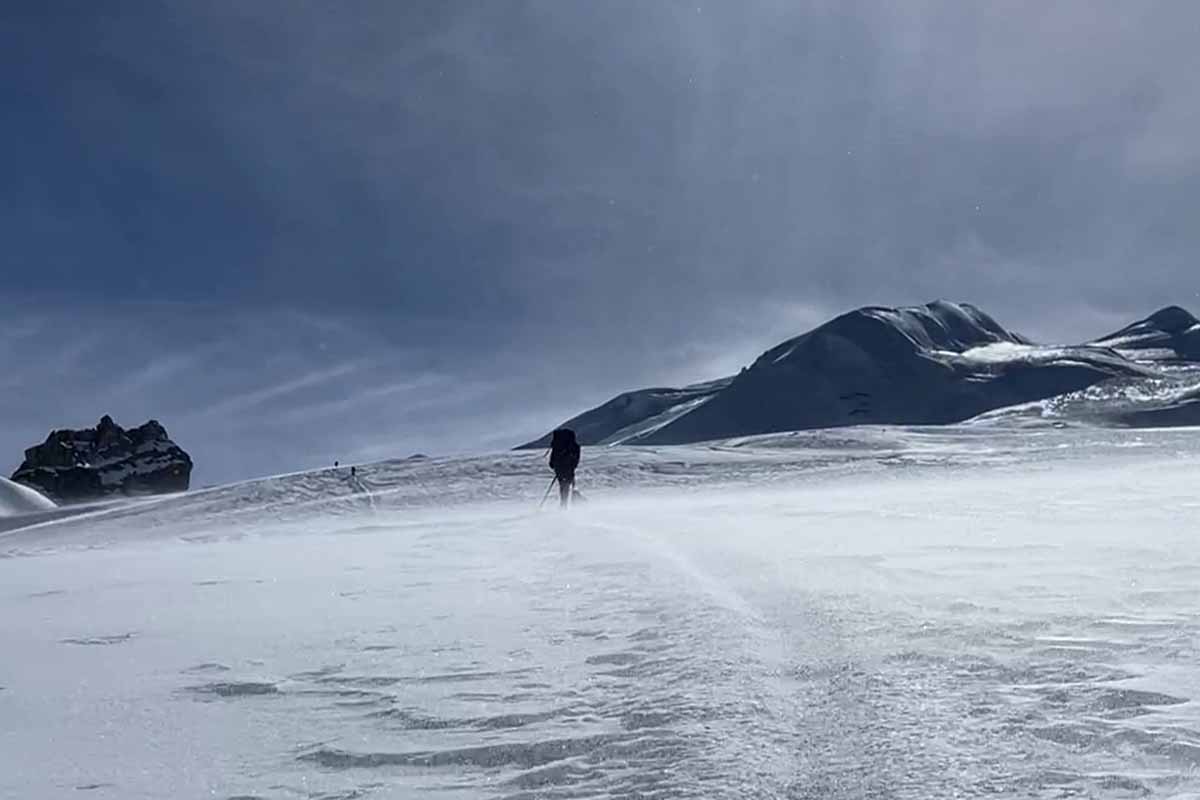
This adventure is perfect for strong trekkers who want to experience altitude without extreme technical sections. But don't misunderstand "non-technical" for "easy." This mountain will stretch your endurance, your strength in cold, and your body's ability to execute at extreme altitude.
Island Peak (6,189m/20,305ft): A technical mini-alpine climb
If Mera is the gentle giant, Island Peak (Imja Tse) is the proper challenger. Island Peak may be barely lower in elevation, but it demands more technical craft than Mera. The summit push involves navigating a vertical headwall, crossing crevasses, and walking along a thin ridge, requiring climbers to use basic mountaineering techniques like rope work, ladder crossings, and proper crampon use. The path to Island Peak usually follows the classic Everest Base Camp trail, offering a mix of Sherpa culture, vibrant teahouses, and sensational views of Ama Dablam, Lhotse, and Everest. But the actual challenge begins beyond EBC. The final climb demands an ice axe and a jumar to ascend fixed ropes leading to the top. It's a short but intense burst of vertical adventure, often used by climbers as a training ground for bigger pushes like Ama Dablam or even Everest itself.
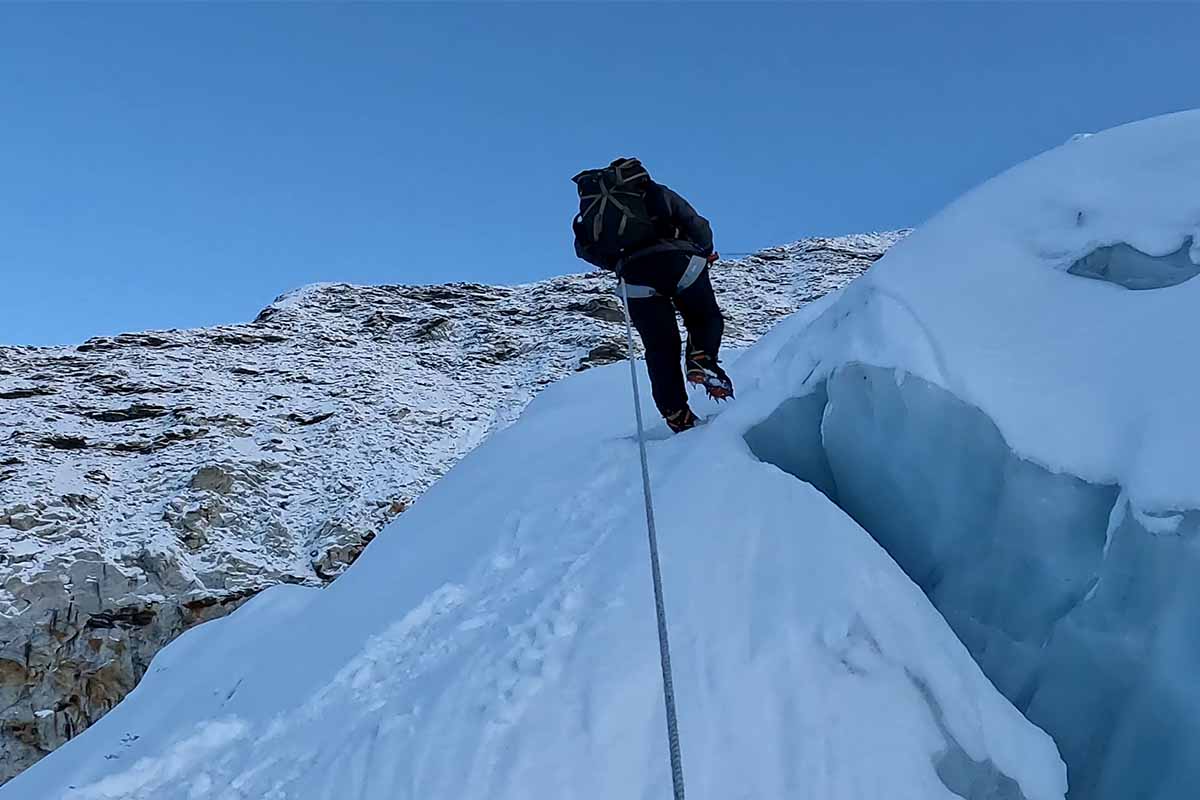
It is for the fit trekker who wants a basic introduction to real mountaineering. If the thought of using an ice axe and climbing a steep ice wall excites you more than it frightens you, and you want to feel like an actual climber, Island Peak is calling.
Accommodation and Logistics
Mera Peak: After crossing Zatrwa La, you'll mostly be camping in the Hinku Valley, although some teahouses exist in places like Khare and Thangnak. It's a more expedition-style experience.
/Altitude sickness point.JPG)
Island Peak: More convenient in terms of logistics. Since it's along the EBC route, you'll stay in comfortable teahouses up to Chukung, with camping only at base camp and summit night.
/Expect camping at high altitude.jpg)
Route and Scenery
Mera Peak Route: The route to Mera Peak passes through the hidden Hinku Valley, offering clean forests, glacial rivers, and fewer trekkers on the trail. You’ll cross Zatrwa La early on, and most of the journey feels rugged, untouched, and raw.
The summit view is legendary; on a clear day, you can witness five of the world’s six highest mountains: Everest, Lhotse, Cho Oyu, Makalu, and Kanchenjunga.
/cover.jpg)
Island Peak Route: Island Peak is located in the Khumbu region, the same route that leads to Everest Base Camp. You’ll pass through renowned Sherpa villages like Namche Bazaar, Tengboche, and Dingboche, staying in teahouses along the way.
The summit offers a panoramic, close-up view of the Lhotse South Face, accompanied by stunning sights of Ama Dablam and the Imja Glacier.
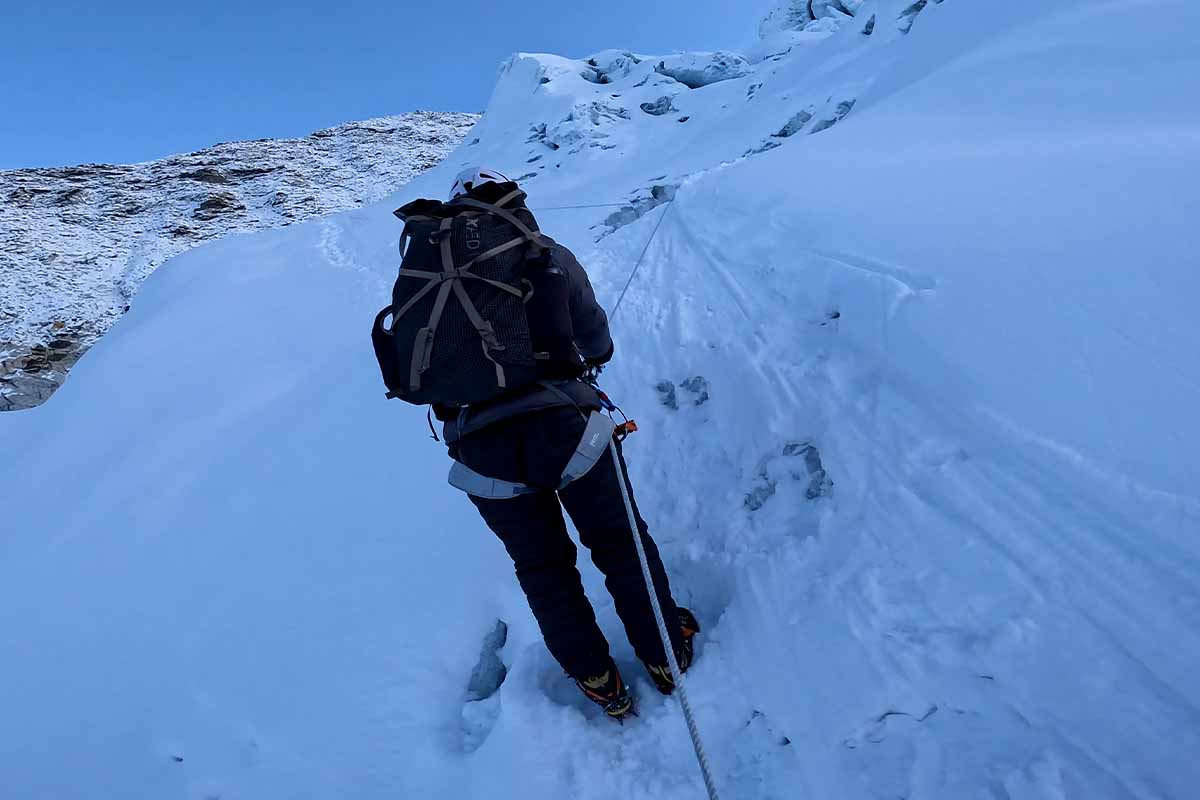
Gear and Skills Required
Mera Peak:
- Perfect fitness and endurance
- Crampon and basic ice axe handling
- Tracing the glacier with fixed ropes
Island Peak:
- Basic knowledge of alpine safety techniques
- Ladder crossings over crevasses
- Use of the Jumar and descender (ATC) on a fixed rope
Note: Before climbing both peaks, your climbing guide will give you pre-climbing lessons/practical information about the safety protocols and gear use at the base camp.
The Verdict: How do you choose?
There is no "suitable" peak, only the peak that is suitable for you. Ask yourself these questions honestly:
Choose Mera Peak Climbing If:
- You are more of an endurance trekker than a specialized climber.
- Your major goal is to witness the most mind-blowing view of the Himalayas possible.
- You want to get into mountaineering without the pressure of vertical ice climbing.
- The concept of a long, silent, remote trek through untouched wilderness excites you.
- You’re physically qualified but not confident in rope or climbing techniques.
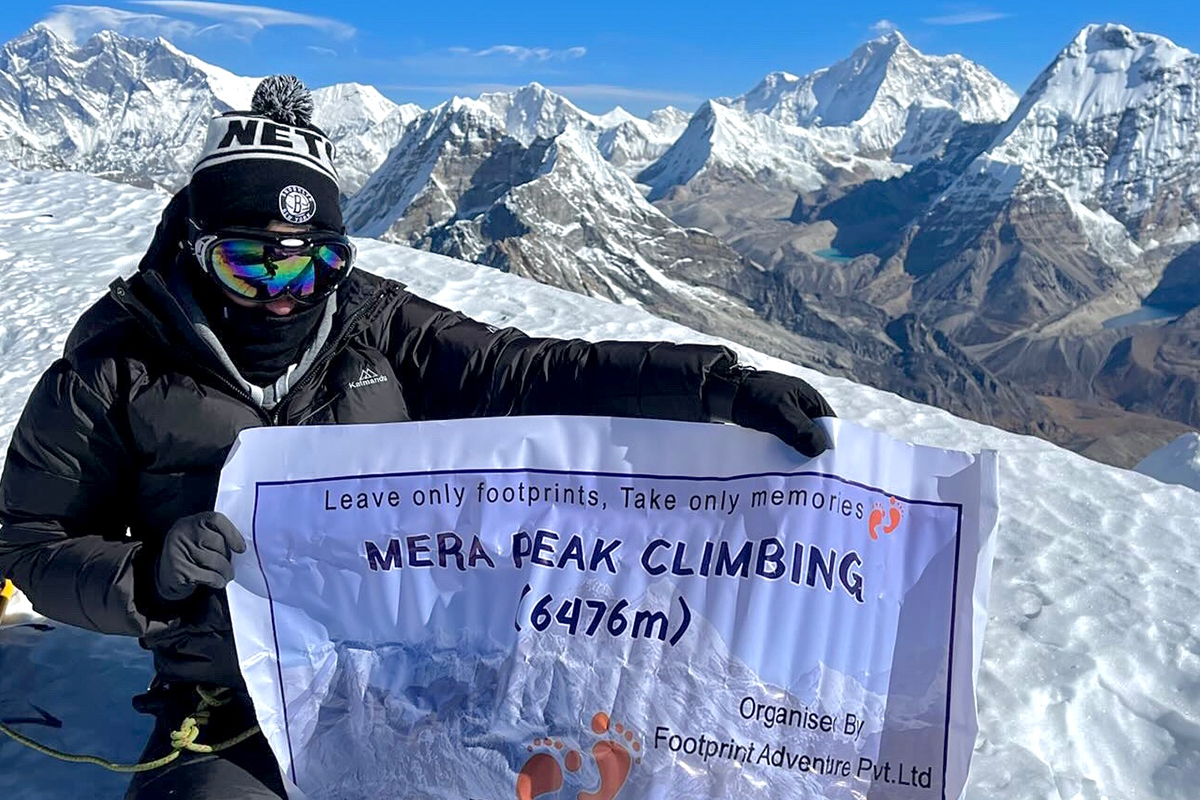
Choose Island Peak Climbing If:
- You’re looking for a challenge that applies real climbing skills.
- The thought of learning to use climbing gear and ascending a rope on a vertical face gives you a thrill.
- You love the vibrancy of the Khumbu Valley and want to experience its classic teahouse culture and hospitality.
- You want a peak that prepares you for more serious Himalayan climbs.
- You are in perfect physical condition, with good upper body strength.
- You’ve trekked to Everest Base Camp before and want to push to the next level.
Final Word From Author
Mera Peak vs Island Peak both deliver an extraordinary adventure, sensational views, and a powerful sense of personal achievement. They mark that thrilling transition from being a trekker to stepping into the world of mountaineering. What counts most is being honest with yourself about your fitness, your fears, and your dreams. The mountains don’t answer to ego; they demand respect, stable preparation, and a humble perspective. No matter which peak you set your eyes on, train with purpose, pack smartly, and go with a trusted, professional guide.
The best mountain you can climb is the one you venture safely and the one that truly corresponds to your sense of adventure. Still skeptical which one to choose? Ask yourself this:
Do I want to go higher, or do I want a tougher challenge?
If you have any questions or need direction, feel free to reach out to our team. We’re here to help you turn your mountain fantasy into reality.
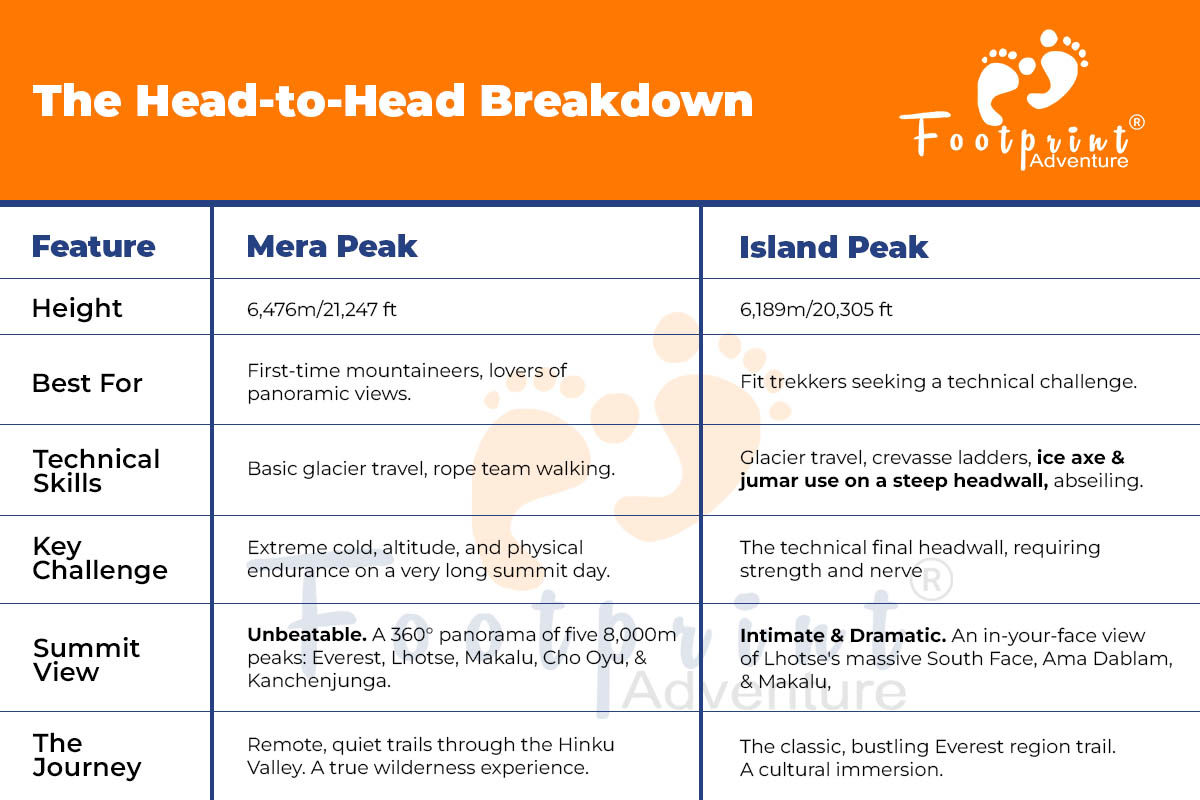


/article beginning.jpg)



/Altitude sickness point.JPG)
/Expect camping at high altitude.jpg)
/cover.jpg)


